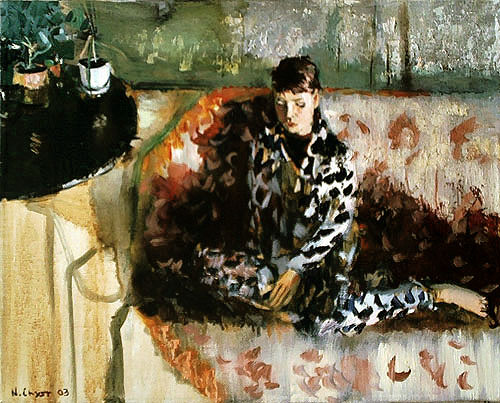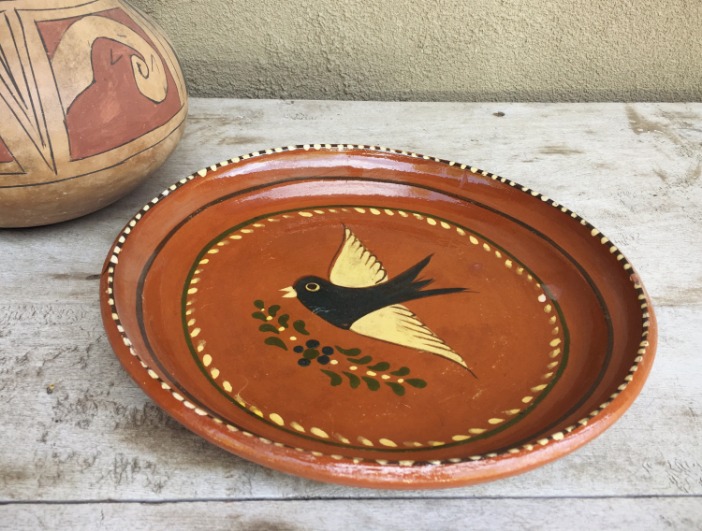Some of Yoshirara’s most iconic practices had been capturing paint onto a canvas with a cannon and plunging via laminated rice-paper screens. Pulverized minerals made into lovely pigments brushed in contrasting layers; damaged shards adjoined with gold refracting to light up beautiful imperfection. Fujimura spoke to me deeply by way of his reflections on these ancient artwork varieties, displaying me a path ahead. He became a Christian within the most unlikeliest of locations – while studying art – in Japan, the place between lower than 1.5% of the inhabitants profess to be Christian. Fujimura’s capacity to see beauty in brokenness helped him discover private healing and inspiration as an artist after September eleven, 2001 dwelling solely three blocks from the World Trade Center. Through his distinctive views of finding faith by way of artwork, Fujimura provided illumination of what I was feeling within myself and the world around me. The gallery’s first show was devoted to the homecoming of G.I.’s., and to work created by soldiers.
He went in circles trying to determine when the Navy would discharge him. It was during these long days and nights that the twenty-six-year-old naval officer found a method to go walkabout on his own. He walked along roads where he found tombs constructed into the hills, the place the ashes of the useless were placed in vases atop a bed of shells. He made pals with a small boy who led him via the countryside and again to the port.
During the 1860s, this stuff, notably the woodcuts, grew to become a supply of inspiration to many Impressionist and post-Impressionist artists in the West. One of essentially the most recognisable components of anime is its distinctive graphical style. The values of the Japanese tradition, similar to simplicity, class, and attention to element, are reflected in this artwork kind. Aside from their physical traits, anime characters represent the principles and values of the Japanese culture. Naruto Uzumaki, as an example, embodies the Japanese worth of tenacity and diligence in the Naruto series. The Japanese cultural attribute of “gaman,” or endurance, is reflected in Naruto’s never-give-up perspective and resolve to endure in the face of difficulties.
Although he denies the connection, new researc suggests an entangled historical past of post-war artisti trad between Japan, the united state, and Europe. Read more about Foo Dog art here. This new exchang created a hunge for all thing Japanese, transformin imports from the nation into trend, must-have item. Woodblock prints, bronzes, lacquer ware and othe items from Japan had been availabl in retailers, galleries and likewise a collectio of hugel in style World’s Fairs.
Studio Notes // 003: Art, Fear & Paint Stories
Some works of this type depict their feminine topics as inhabitants of an imagined, exotic land. Pictures of women dressed within the kimono-style “dressing gowns” and “tea gowns” worn to entertain intimate associates and admirers conveyed that these subjects were stylish and trendy, perhaps suggesting that they have been sensual creatures as nicely. For example, as curiosity in Japan grew, its culture was imagined to be feminine, as symbolized by courtesans and geishas. The frequency with which enticing women, or male actors dressed as girls, appear in the Japanese prints and work out there within the West strengthened this stereotype for some Western observers. A vogue for carrying imported kimono and similarly styled robes flourished partially because of the exotic and sensual associations hooked up to such clothing in the West. Notan (pronounced no-tan) is a Japanese term that means ‘light and darkish harmony/balance.’ It’s a design idea that appears at how mild and darkish elements of a composition interact solely using black and white.
Many of the woodblock prints have been lost or destroyed, as Obata sought to pick just one to create his limited version of a hundred prints. “Each certainly one of these prints is a triumph, a masterpiece,” says Crawford Alexander Mann, III, the American Art Museum’s curator of prints and drawings.
Want design tips & business trends (and the occasional promotion) in your inbox?
“For the primary time, the exhibition Japanese Connections traces the basic contribution of Japanese aesthetics to the event of ornamental principles of recent painting in France at the finish of the nineteenth century. This dialogue between East and West celebrates creativity and cross-cultural inspiration between the Ukiyo-e artists and the Nabis painters through a coloured, vibrant and refined expression. On Japanese woodblock prints, there are blocks of writing which identify the print’s title, sequence, artist, publisher, and other folks involved in its manufacturing. These blocks are often found in the identical place, though their places can range. Japanese characters (kanji) are learn from right to left, high to bottom. View the diagram above and/or download the PDF for a visible guide on the means to read a woodblock print.
Gutai: favoring large-scale multimedia and performance art
When you’re taking pictures, it’s really easy to be swayed by the emotional reminiscence of the experience of that morning on the seashore, the colors (and in my case, the reminiscence of a warm pain au chocolate I’d just eaten) and want to paint them. Although these personal experiences are all valid, for the inspiration of the composition, and the viewer they don’t help it. I discover three value studies or Japanese Notan studies could be surprisingly helpful in guiding your choices for creating a compelling composition in your paintings.
In a blown glass vase from 1901, a pattern of peacock feathers swirls up the opalescent base, gracefully flowering into a fan-like form at its opening. Tiffany, who began his profession as a painter, first encountered Japanese art as a young man on the 1867 World’s Fair. A few years later, at age 24, he began to check glassmaking, the medium for which he would become best known. During his lifetime, he embraced a extensive array of media, together with pottery, windows, painting, metalwork, enamels, jewellery, lighting, mosaics, and interiors. Many of his works have been deeply impressed by his travels around the globe, including North Africa and the Middle East, in addition to Asia.
Ukiyo-e, which implies photos of the floating or everyday world, is a Japanese faculty of printmaking based on the idea that everything is transient. Its subject material, as its name suggests, was drawn from everyday life and celebrated the non-heroic. The Ukiyo-e prints on woodcuts had been mass-produced, typically in extra of 1,000 models, and have been thus low-cost enough for the typical Japanese shopper. The reasonable price-tag also made it possible for them to be imported into Europe, and to be appreciated past the elite circles, particularity in Paris, the place they had been to have their most vital influence. Work from the candidates of that 12 months have been largely works nearer to realism of the 70’s, surprisingly, the winner was a young man named, Jun Ito [not to be confused with the famous mangaka, Junji Ito]. Coleman immediately went the Ueno Park Art Museum and to Gallery Hosegawa in Tokyo to familiarize himself with conventional types and new works. We know from the records that Coleman spent six months in Tokyo, after which returned to New York early in 1947.








